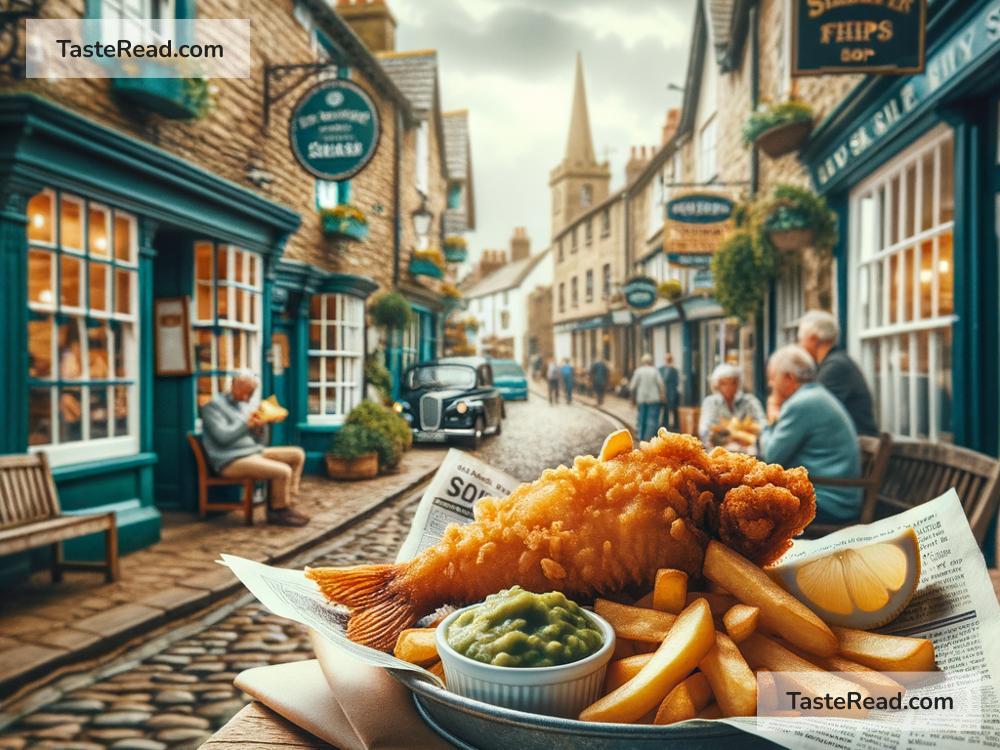The Origins of British Fish and Chips: A Tale of Tradition
Fish and chips is one of the most beloved dishes in the United Kingdom. Whether enjoyed at the seaside on a sunny day, served in a newspaper wrapping for a quick meal, or dished up on a plate during family dinners, it is a comfort food that has stood the test of time. But where did this iconic duo come from? The story of British fish and chips is rich in history and reflects the diverse influences that have shaped the country’s cuisine. Let’s take a dive into the origins of this classic dish.
The Humble Beginnings of Fish and Chips
Fish and chips became popular in Britain during the 19th century, but the ingredients and cooking techniques for this dish came from much earlier. Both fried fish and chipped (cut) potatoes had separate histories, and only when combined did they create the famous British staple.
Fried Fish: A Recipe Born from Jewish Tradition
The practice of frying fish came to Britain with Jewish immigrants from Spain and Portugal in the 16th century. In these regions, Sephardic Jewish communities had a tradition of frying fish in oil. This method allowed fish to be preserved longer and made it convenient to eat cold, especially on the Sabbath when cooking was prohibited.
Jewish immigrants brought their frying techniques to England and introduced locals to their flavorful recipes. Fried fish quickly caught on with the broader population. By the early 18th century, fried fish stalls were popping up across London, particularly in poor neighborhoods where affordable street food was in high demand.
Chips: Potatoes Take the Spotlight
Potatoes arrived in Britain from the Americas in the late 16th century. While it took some time for the vegetable to gain popularity, by the 18th century, potatoes had become a staple food for many people. Cutting potatoes into thin strips or wedges and frying them in oil was common in many European countries, including France and Belgium.
The addition of fried potatoes — or “chips,” as the British call them — to dishes was a simple and inexpensive way to create hearty meals. In Britain, chips gained popularity as an easy-to-make street food that served hungry workers.
Fish and Chips Come Together
It wasn’t until the 19th century that fish and chips joined forces as a single dish. Many credit the pairing to the Industrial Revolution. During this period, Britain’s urban population grew rapidly, and factory workers needed cheap, filling, and portable meals. Fried fish and chips ticked all the boxes.
The arrival of railways also helped the rise of fish and chips. It allowed fresh fish from coastal areas to be transported quickly to inland cities, ensuring a steady supply of quality fish. The affordability and accessibility of the meal made it a hit among working-class families.
The First Fish and Chip Shops
The first “chippy” (fish and chip shop) is believed to have opened in the mid-19th century. Historians often point to two contenders for the honor: Joseph Malin, a Jewish immigrant who opened a shop in London in the 1860s, and John Lees, who operated a fish and chip business out of a wooden hut in Lancashire in 1863.
Regardless of who was first, fish and chip shops quickly spread across the country. By the early 20th century, fish and chips had become a national treasure. In many industrial towns, families would line up at their local chippy for hot, crispy fish and golden chips after a long day of work.
Fish and Chips During Wartime
Fish and chips went on to play a special role during World War I and World War II. As food shortages swept across Europe, many dishes disappeared from menus due to rationing. However, fish and chips managed to survive thanks to their simplicity and availability. The British government recognized the dish’s importance in boosting morale during difficult times and ensured that supplies of fish and potatoes were prioritized.
Fish and chips became a symbol of stability and comfort, helping keep people fed during uncertain years. It was both practical and a reminder of the country’s resilience.
The Decline and Revival
In the decades following the wars, fish and chips faced competition from newer fast foods like burgers, pizzas, and kebabs. Some younger generations turned to these foreign dishes, especially as global cuisines became more accessible.
However, fish and chips remain a nostalgic classic for many Britons. In recent years, traditional chippies have adapted their menus to include options like battered sausages, mushy peas, and halloumi fries, appealing to modern tastes while honoring the original dish.
Conclusion: A National Treasure
Fish and chips are more than just a meal — they are part of British identity and history. Born from the influence of Jewish immigrants and the humble potato, the dish grew into a national favorite during the Industrial Revolution. It kept Britons going through hardship and continues to hold a special place in their hearts.
So, the next time you enjoy fish and chips, know that you’re eating a meal steeped in centuries of tradition, shaped by cultural exchange, and loved by generations. Whether you prefer cod or haddock, salt and vinegar, or mushy peas, fish and chips will always remain a delicious reminder of Britain’s rich heritage.


